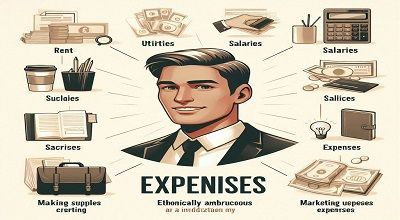Expenses: Understanding and Examples
Expenses refer to the monetary outflows incurred by individuals, businesses, or organizations to maintain their operations, generate revenue, or fulfill obligations. These financial outflows are subtracted from revenue to determine profit or loss. Understanding various types of expenses is crucial for effective financial management and budgeting. Below are some key categories of expenses, along with examples:
1. Operating Expenses
Operating expenses are the costs incurred in the day-to-day activities of a business. They are essential for sustaining ongoing operations and generating revenue. Examples include:
- Rent: The cost of leasing office or retail space.
- Utilities: Expenses related to electricity, water, gas, and other essential services.
- Salaries and Wages: Payments made to employees for their work.
- Marketing and Advertising: Expenditure on promotional activities to attract customers.
- Office Supplies: Costs associated with purchasing stationery, printer ink, etc.
2. Cost of Goods Sold (COGS)
COGS represents the direct costs associated with producing goods sold by a company. It includes raw materials, labor, and manufacturing overhead. Examples include:
- Raw Materials: The components used in manufacturing products.
- Direct Labor: Wages paid to workers directly involved in production.
- Manufacturing Supplies: Materials consumed during the manufacturing process.
- Depreciation of Production Equipment: Allocation of equipment costs over its useful life.
3. Financial Expenses
Financial expenses are costs related to borrowing money or obtaining financing for a business. They include interest payments, bank fees, and other charges. Examples include:
- Interest on Loans: Payments made to lenders for borrowing funds.
- Bank Charges: Fees levied by financial institutions for services provided.
- Credit Card Interest: Interest accrued on outstanding credit card balances.
- Loan Origination Fees: Charges for processing loan applications.
4. Depreciation and Amortization
Depreciation represents the gradual decrease in the value of tangible assets over time, while amortization pertains to the gradual reduction of intangible assets’ value. Examples include:
- Depreciation of Buildings: Allocation of the cost of buildings over their useful lives.
- Amortization of Patents: Spreading the cost of acquiring patents over their estimated useful life.
- Depreciation of Vehicles: Gradual reduction in the value of company vehicles.
5. Non-Operating Expenses
Non-operating expenses are unrelated to the core business activities and often arise from one-time events. Examples include:
- Losses on Investments: Reductions in the value of investments held by the company.
- Lawsuit Settlements: Payments made to settle legal disputes.
- Foreign Exchange Losses: Losses incurred due to unfavorable exchange rate movements.
- Natural Disaster Damages: Costs associated with repairing damages caused by natural disasters.
Final Conclusion
In conclusion, expenses encompass a wide range of financial outflows necessary for conducting business operations. Proper management and control of expenses are essential for ensuring financial stability and profitability. Understanding the different types of expense enables businesses to make informed decisions regarding resource allocation and budgeting.
